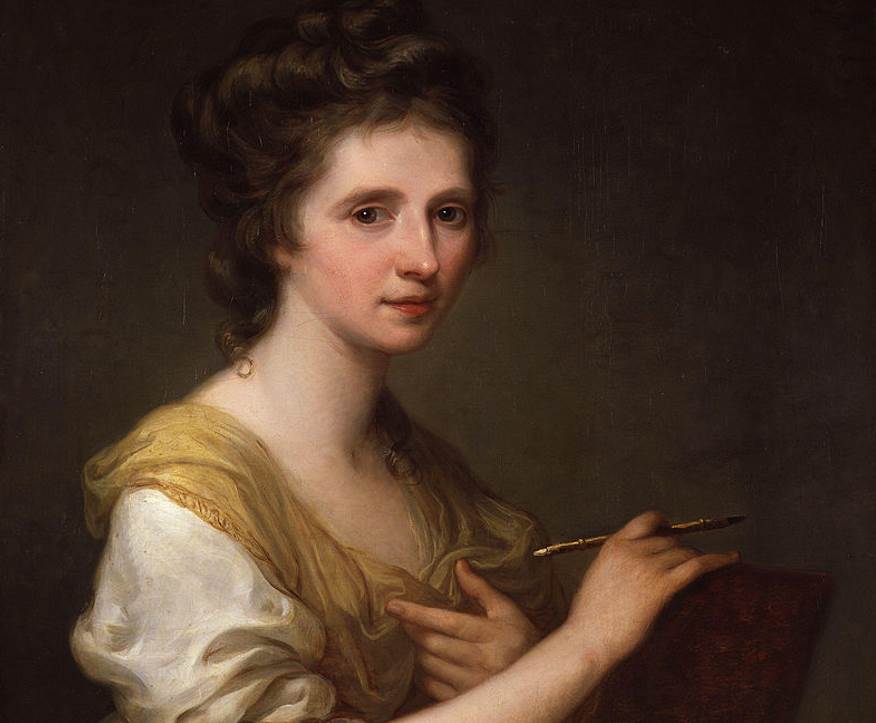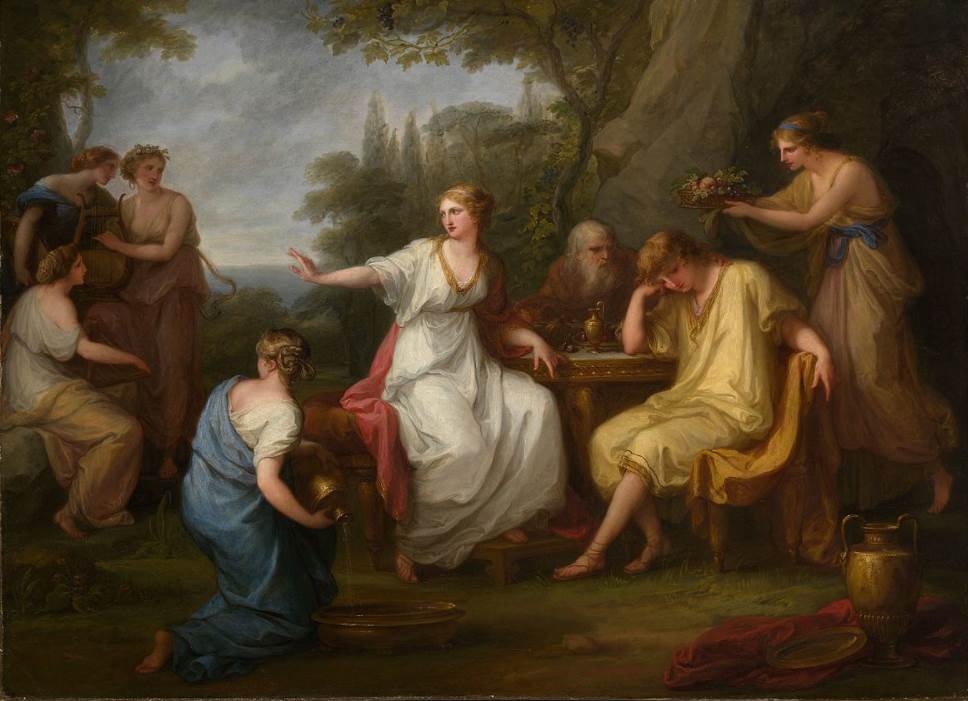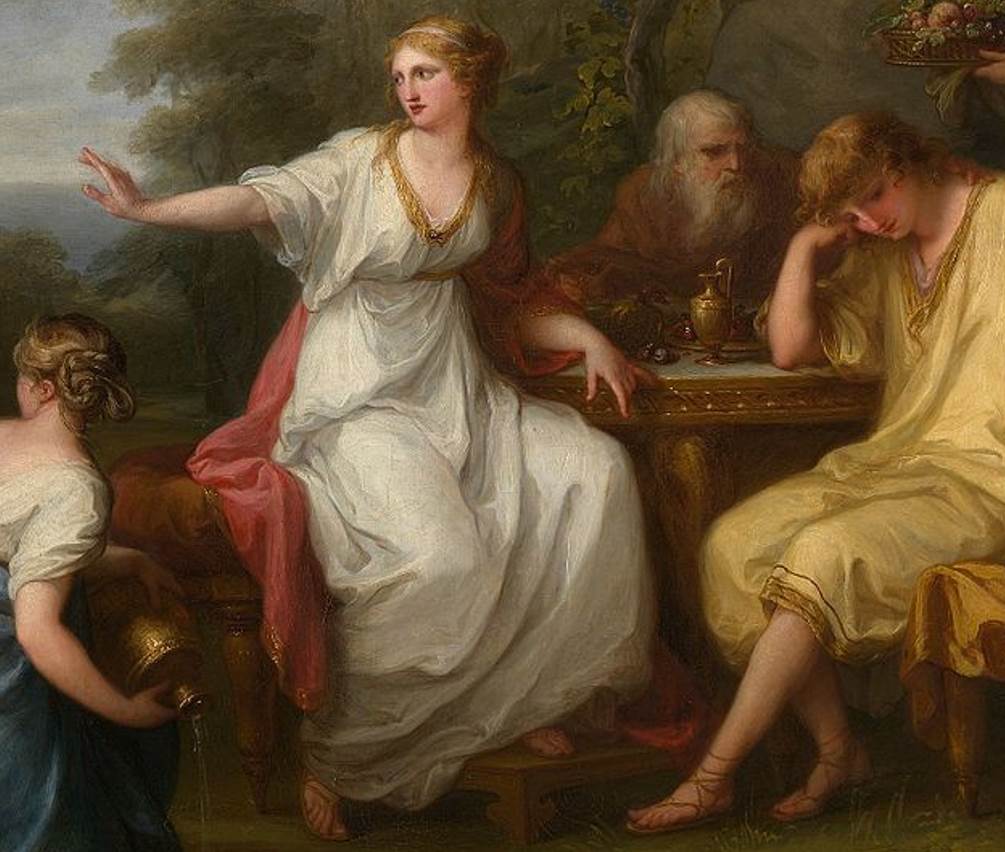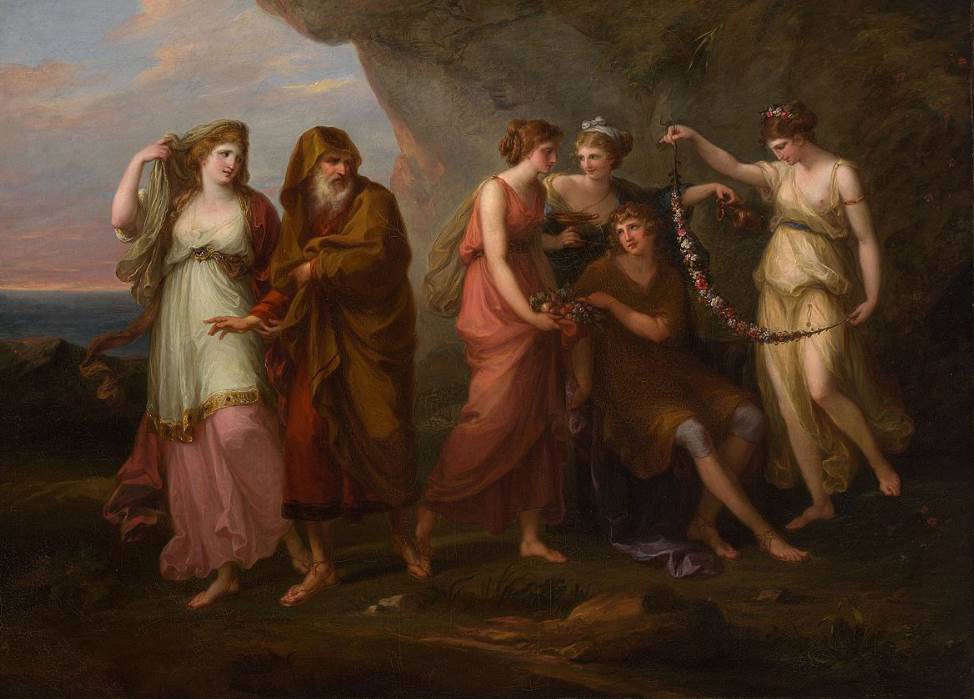By the time one of the most renowned Neoclassical artists in history was in her early 40s, she was already one of the most famous painters in Europe.
Angelica Kauffman (1741-1807) moved to Rome in the early 1780s and spent the final quarter-century of her life in the Italian capital.
She never stopped painting and continued to produce many masterpieces during these years, including portraits, history paintings, and mythological paintings in the typical Neoclassical style.
In this article, you’ll discover some of the most interesting facts about The Sorrow of Telemachus by Angelica Kauffman, one of the artist’s most famous paintings.
1. It was completed 2 years after she had moved to Rome in the early 1780s
Angelica Kauffman was a Swiss artist who moved quite a bit during her younger years. She spent a lot of time in Italy and became a member of the Accademia di Belle Arti di Firenze in 1762.
She built a successful career and later moved to the United Kingdom where she became one of the founding members of the Royal Academy in London.
Together with Mary Moser (1744-1829), she was one of two female founding members of this prestigious art institute in 1768.
She became both a renowned portraitist and history painter and found art patrons wherever she went. She spent the final decades of her life living in Rome after moving there with her second husband in 1781.
She completed The Sorrow of Telemachus shortly after in 1783, a time when she was already one of the most famous artists in Europe.

2. It was inspired by a French novel that was published in 1699
The painting was inspired by a French novel titled “The Adventures of Telemachus.” It was written by François Fénelon (1651-1715) and published anonymously for the first time in 1699.
The novel revolves around the central character, Telemachus, who was the son of Odysseus. He goes on educational travels while being accompanied by his tutor “Mentor.”
Early on in the story, it’s revealed that Mentor is Minerva in disguise, the ancient Greek goddess of wisdom.
Fénelon didn’t come up with the main characters in the novel himself. He merely filled a gap in the plot of legendary author Homer’s world-famous work titled “Odysseus.”

3. It depicts the moment when Calypso tells her nymphs to stay silent
The main figures in this painting are Kalypso and her nymphs, Mentor, and Telemachus.
Telemachus is the young man sitting at the table and as you can see, he doesn’t look happy. That’s because Kalypso’s nymphs are singing songs in honor of Odysseus, his father, and this causes him grief.
Kalypso is holding up her hand as she sings for her nymphs to stop singing these songs.

4. It was one of two paintings commissioned by an Italian scholar
The story started much better for Telemachus. He is welcomed with open arms by the Nymphs of Kalypso’s island Ogygia after being shipwrecked there.
Before Angelica Kauffman completed The Sorrow of Telemachus, she already finished the prelude to this work titled “Telemachus and the Nymphs of Calypso” (1782).
This work prominently depicts both Mentor, the goddess Minerva disguised as an old man, and Telemachus, who is being welcomed with fruit, flowers, and wine.
Both paintings were part of the same commission by a man named Onorato Caetani (1742–1797), an Italian scholar who lived in Rome where Kauffman moved just a year earlier.

5. Kauffman made two more replicas of this painting
The Swiss artist liked this particular painting because she made two replicas in the late 1780s.
The second version was completed in 1789 and was sold to a private buyer in 1998 at Christie’s in London for the relatively humble fee of £33,350.
The first replica was completed in 1788 and is currently on display at the Bündner Museum of Art in Chur, a museum that houses over 8,000 artworks ranging from the 18th century to the modern era.

6. How big is The Sorrow of Telemachus by Angelica Kauffman?
Angelica Kauffman was a very prolific artist who left behind an incredible oeuvre of Neoclassical paintings. She left behind approximately 800 oil paintings.
While many of her paintings were quite big, some were relatively small and medium-sized, including this one.
The Sorrow of Telemachus by Angelica Kauffman is an oil on canvas painting that has dimensions of 83.2 × 114.3 centimeters (32.8 x 45 inches).
7. Where is the painting located today?
The painting remained in the collection of Monsignor Onorato Caetani for just a few years before it was sold to an art dealer in Florence.
From here, it moved to art dealer Agnew in 1895 and subsequently to Eugène Fischof in Paris and Collis P. Huntington in New York between 1899 and 1900.
It transferred from the collection of Mrs. Henry E. Huntington to her son Archer Milton Huntington in 1924 who bequeathed it to the MET In New York City in 1925.
Today, you can still admire Kaufmann’s masterpiece in the Metropolitan Museum of Art in New York!



